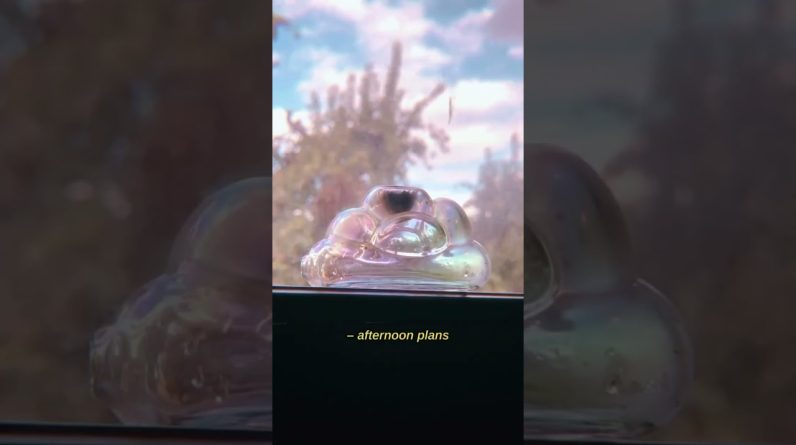“There’s a world past ours, a world that’s far-off, close by and invisible. And there’s the place God lives, the place the lifeless dwell, the spirits and the saints, a world the place the whole lot has already occurred and the whole lot is thought. That world talks. It has a language of its personal. I report what it says. The sacred mushroom takes me by the hand and brings me to the world the place the whole lot is thought. It’s they, the sacred mushrooms, that talk in a means I can perceive. I ask them they usually reply me. After I return from the journey that I’ve taken with them, I inform what they’ve informed me and what they’ve proven me.”
Thus does the well-known Mazatec shaman, Maria Sabina, reverently describe the godgiven powers of the intoxicating mushrooms that she makes use of in her ceremony that has come down from ages previous.
Few vegetation of the gods have ever been held in better reverence than the sacred mushrooms of Mexico. So hallowed have been these fungi that the Aztecs known as them Teonanacatl (“divine flesh”) and used them solely in essentially the most holy of their ceremonies. Regardless that, as fungi, mushrooms don’t blossom, the Atztecs referred to them as “flowers,” and the Indians who nonetheless use them in non secular rituals have endearing phrases for them, resembling “little flower.” When the Spaniards conquered Mexico, they have been aghast to search out the natives worshipping their deities with the assistance of inebriating vegetation: Peyotl, Ololiuqui, Teonanacatl. The mushrooms have been particularly offensive to the European ecclesiastical authorities, they usually got down to eradicate their use in non secular practices.
“They possessed one other technique of intoxication, which sharpened their cruelty; for in the event that they used sure small toadstools… they’d see a thousand visions and particularly snakes… They known as these mushrooms of their language teunamacatlth, which implies ‘God’s flesh,’ or ‘of the Satan,’ whom they worshipped, and on this clever with that bitter victual by their merciless God have been they houseled.”
In 1656, a information for missionaries argued in opposition to Indian idolatries, together with mushroom ingestion, and advisable their extirpation. Not solely do stories condemn Teonanacatl, however precise illustrations denounce it. One depicts the satan attractive an Indian to eat the fungus; one other has the satan performing a dance upon a mushroom.
“However earlier than explaining this [idolatry],” one of many clerics stated, “I want to clarify the character of the stated mushrooms [which] have been small and yellowish, and to gather them the monks and outdated males, appointed as ministers for these impostures, went to the hills and remained virtually the entire night time in sermonizing and in superstitious praying. At daybreak, when a sure little breeze which they know begins to blow, they’d collect them, attributing to them diety. When they’re eaten or drunk, they intoxicate, depriving those that partake of them of their senses and making them consider a thousand absurdities.”
Dr. Francisco Hernandez, private doctor to the king of Spain, wrote that three sorts of narcotic mushrooms have been worshipped. After describing a deadly species, he said that “others, when eaten, trigger not demise however insanity that occasionally is lasting, of which the symptom is a form of uncontrolled laughter. Normally known as teyhuintli, these are deep yellow, acrid, and of a not displeasing freshness. There are others once more which, with out inducing laughter, deliver earlier than the eyes every kind of issues, resembling wars and the likeness of demons.
“But others are there not much less desired by princes for his or her fiestas and banquets, of nice worth. With night-long vigils are they sought, superior and terrifying. This sort is tawny and considerably acrid.”
For 4 centuries nothing was identified of the mushroom cult, and it was even doubted that mushrooms have been used hallucinogenically in ceremony. The Church fathers had completed such a profitable job (by way of persecution) of driving the cult into hiding, that no anthropologist or botanist had ever uncovered the non secular use of those mushrooms.
In 1916 an American botanist lastly proposed a “resolution” to the identification of Teonanacatl, concluding that Teonanacatl and the Peyote have been the identical drug. Motivated by mistrust of the chroniclers and Indians, he intimated that the natives, to guard Peyote, have been indicating mushrooms to the authorities. He argued that the dried, brownish, disk-like crown of Peyote resembles a dried mushroom—so remarkably that it’s going to even deceive a mycologist. It was not till the Thirties that an understanding of the function of hallucinogenic mushrooms in Mexico and a data of their botanical identification and chemical composition began to grow to be accessible. Within the late Thirties the primary of the various species of sacred Mexican mushrooms have been collected and related to a contemporary mushroom ceremony. Subsequent fieldwork has resulted within the discovery of some two dozen species. An important belong to the genus Psilocybe, twelve of which have been reported, not together with Stropharia cubensis, generally thought of a Psilocybe. An important species look like Psilocybe mexicana and P hoogshagenii.
These numerous mushrooms at the moment are identified to be employed in divinatory and spiritual rites among the many Mazatec, Chinantec, Chatino, Mije, Zapotee, and Mixtee of Oaxaca; the Nahua and potential the Otomi of Puebla; and the Tarascana of Michoacan. The current heart of intensive use of the sacred mushrooms is among the many Mazatec.
Mushrooms fluctuate in abundance from yr to yr and at completely different seasons. There could also be years when a number of species are uncommon or absent—they fluctuate of their distribution and will not be ubiquitous. Moreover, every shaman has his personal favourite mushrooms and will forego others. Maria Sabina, for instance, is not going to use Stropharia cubensis. And sure mushrooms are used for particular functions. Because of this every ethnobotanical expedition might not look forward to finding the identical assortment of species employed at one time, even in the identical locality and by the identical folks.
The chance that extra species will likely be present in use is way from distant. Chemical research have indicated that psilocybin and, to a lesser extent, psilocine are current in most of the species of the a number of genera related to the Mexican ceremony. Actually, these compounds have been remoted from many species of Psilocybe and different genera in extensively separated elements of the world, though the proof accessible means that solely in Mexico are psilocybin-containing mushrooms at current utilized in native ceremonies.
The fashionable mushroom ceremony is an all-night seance which can embrace a curing ritual. Chants accompany the principle a part of the ceremony. The intoxication is characterised by fantastically coloured visions in kaleidoscopic motion, by auditory hallucinations, and, the partaker dropping himself in unearthly flights of fancy.
The mushrooms are collected within the forests on the time of the brand new moon by a virgin lady, then taken to a church to stay briefly on the altar. They’re by no means offered within the market. The Mazatec name the mushrooms Nti-xi-tjo, by which ’Nti is a particle of reverence and endearment; the remainder of the title means “that which springs forth.” A Mazatec defined this although, poetically: “The little mushroom comes of itself, nobody is aware of whence, just like the wind that comes we all know not whence nor why.”
The shaman chants for hours, with frequent clapping or percussive slaps on the thighs in rhythm with the mantra. Maria Sabina’s chanting, which has been recorded, studied, and translated, in nice half proclaims humbly her {qualifications} to remedy and to interpret divine energy by way of the mushrooms. Excerpts from her chant, all within the stunning tonal Mazatec language, give an thought of her many “{qualifications}.”
Lady who thunders am I,
lady who
sounds am I.
Spiderwoman am I,
hummingbird lady
am I….
Eagle lady am I, essential
eagle
lady am I.
Whirling lady of the
whirlwind am I,
lady of a
sacred, enchanted place am I,
Lady of the capturing stars
am I.
The primary non-Indian totally to witness the Mazatec ceremony wrote the next understanding ideas about this use of the mushrooms:
“Right here let me say a phrase in regards to the nature of the psychic disturbance that the consuming of the mushroom causes. This disturbance is wholly completely different from the impact of alcohol, as completely different as night time from day. We’re getting into upon a dialogue by which the vocabulary of the English language, of any European language, is significantly poor. There are not any apt phrases in it to characterize one’s state when one is, let’s say, ‘bemushroomed.’ For tons of, even 1000’s, of years, we now have considered these items by way of alcohol, and we now have to interrupt, the bounds imposed on us by our alcoholic obsessions. We’re all, willy-nilly, confined throughout the jail partitions of our on a regular basis vocabulary. With talent in our alternative of phrases, we might stretch accepted meanings to cowl barely new emotions and ideas, however when a frame of mind is completely distinct, wholly novel, then all our outdated phrases fail. How do you inform a person who has been born blind what seeing is like? Within the current case that is an particularly apt analogy, as a result of superficially the bemushroomed man reveals a couple of of the target signs of 1 who’s intoxicated, drunk. Now nearly all of the phrases describing the state of drunkenness, from ‘intoxicated’ (which accurately means ‘poisoned’) by way of the scores of present vulgarisms, are contemptuous, belittling, pejorative. How curious it’s that trendy civilized man finds surcease from care in a drug for which he appears to haven’t any respect! If we use by analogy the phrases appropriate for alcohol, we prejudice the mushroom, and since there are few amongst us who’ve been bemushroomed, there’s hazard that the expertise is not going to be pretty judged. What we’d like is a vocabulary to explain all of the modalities of a divine inebriant….”
Upon receiving six pairs of mushrooms within the ceremony, this novice-participant ate them. He skilled the feeling of his soul being faraway from his physique and floating in area. He noticed “geometric patterns, angular, in richest colours, which grew into architectural constructions, the stonework in good colours, gold and onyx and ebony, extending past the attain of sight, in vistas measureless to man. The architectural visions appeared to be oriented, appeared to belong to the… structure described by the visionaries of the Bible.” Within the faint moonlight, “the bouquet on the desk assumed the size and form of an imperial conveyance, a triumphant automobile, drawn by… creatures identified solely to mythology.”
Mushrooms have apparently been ceremonially employed in Mesoamerica for a lot of centuries. A number of early sources have prompt that Mayan languages in Guatemala had mushrooms named for the underworld. Miniature mushroom stones, 2200 years of age, have been present in archaeological websites close to Guatemala Metropolis, and it has been postulated that stone mushroom effigies buried with a Mayan dignitary prompt a reference to the 9 Lords of the Xibalba, described within the sacred guide Popol Vuh. Really, greater than 200 mushroom stone effigies have been found, the oldest relationship from the primary millennium B.C. Though the bulk are Guatemalan, some have been unearthed in El Salvador and Honduras and others as far north as Vera Cruz and Guerrero in Mexico. It’s now clear that no matter the usage of these “mushroom stones,” they point out the good antiquity of a complicated sacred use of hallucinogenic mushrooms.
An outstanding statue of Xochipilli, Aztec Prince of Flowers, from the early sixteenth century, was not too long ago found on the slopes of Mt. Popocatepetl. His face is in ecstasy, as if seeing visions in an intoxication; his head is barely tilted, as if listening to voices. His physique is engraved with stylized flowers which have been recognized as sacred, most of them inebriating vegetation. The pedestal on which he sits is adorned with a design representing cross-sections of the caps of Psilocybe aztecorum, an hallucinogenic mushroom identified solely from this volcano. Thus Xochipilli undoubtedly represents not merely the Prince of Flowers, however extra particularly the Prince of Inebriating Flowers, together with the mushrooms which, in Nahuatl poetry, have been known as “flowers” and “flowers that intoxicate.”
Have psilocybin-containing mushrooms ever been employed as magico-religious hallucinogens within the New World? The reply might be sure.
A species of Psilocybe and presumably additionally Stropharia are used as we speak close to the basic Maya ceremonial heart of Palenque, and hallucinogenic mushrooms have been reported in use alongside the border between Chiapas in Mexico and Guatemala. Whether or not these trendy mushroom practices within the Maya area signify vestiges of former use or have been not too long ago launched from Oaxaca isn’t but potential to say.
Nonetheless, proof is now accumulating to point {that a} mushroom cult flourished in prehistoric occasions—from 100 B.C. to about A.D. 300-400 in northwestern Mexico: in Colima, Jalisco, and Nayarit. Funerary effigies, with two “horns” protruding from the pinnacle, are believed to signify female and male “deities” or monks related to mushrooms. Traditions amongst modern Huichol Indians in Jalisco additionally recommend the previous non secular use of those fungi “in historic occasions.”
What about South America, the place these psychoactive mushrooms abound? There isn’t a proof of such use as we speak, however indications of their obvious former employment are many. The Yurimagua Indians of the Peruvian Amazon have been reported within the late seventeenth and early eighteenth centuries to be consuming a potently inebriating beverage comprised of a “tree fungus.” The Jesuit report said that the Indians “combine mushrooms that develop on fallen bushes with a form of reddish movie that’s discovered normally connected to rotting trunks. This movie may be very sizzling to the style. No one who drinks this brew’ fails to fall below its results after three draughts of it, since it’s so sturdy, or extra appropriately, so poisonous.” It has been prompt that the tree mushroom may need been the psychoactive Psilocybe yungensis, which happens on this area.
In Colombia, many anthropomorphic gold pectorals with two dome-like ornaments on the pinnacle have been discovered. They’re within the so-called Carien fashion, and the vast majority of them have been unearthed within the Sinú space of northwestern Colombia and within the Calima area on the Pacific coast. For lack of a greater time period, they’ve been known as “telephone-bell gods,” because the hole semi-spherical ornaments resemble the bells of old school telephones. It has been prompt that they signify mushroom effigies. The invention of comparable artifacts in Panama and Costa Rica and one in Yucatan is perhaps interpreted to recommend a prehistoric continuum of a sacred mushroom cult from Mexico to South America.
Additional to the south in South America, there’s archaeological proof that will recommend the non secular significance of mushrooms. Moche effigy stirrup vessels from Peru, for instance, have mushroom-like caphalic ornaments.
Whereas the archaeological proof is convincing, the virtually full lack of reference in colonial literature to such use of mushrooms, and the absence of any identified trendy hallucinogenic use of mushrooms amongst aboriginal teams of South America, offers trigger for warning within the interpretation of what in any other case would possibly simply be interpreted as historic mushroom effigies from south of Panama. If, nevertheless, it turns into evident that the varied archaeological artifacts from South America talked about above do signify hallucinogenic mushrooms, then the world for his or her significance in America will likely be tremendously amplified.
Reprinted from Crops of the Gods: Origins of Hallucinogenic Use, revealed by Alfred van der Marck Editions, New York, 1987. © 1979 by McGraw-Hill Guide Firm (UK) Restricted, Maidenhead, England.

Learn the complete challenge right here.
The publish From the Archives: Little Flowers of the Gods (1987) appeared first on Excessive Instances.





